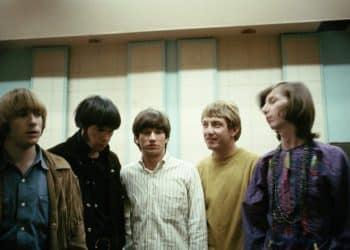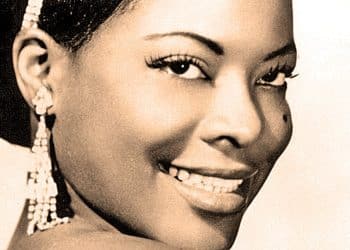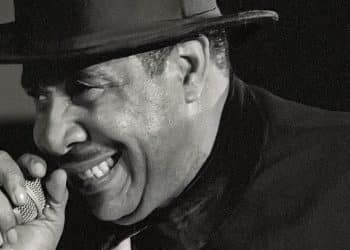Dr. John, whose real name was Malcolm John Rebennack Jr., was an American singer, songwriter, pianist, and guitarist. He was born on November 20, 1941, in New Orleans, Louisiana, and passed away on June 6, 2019.
Dr. John was a highly influential figure in the New Orleans music scene, particularly known for his unique blend of blues, jazz, R&B, and rock and roll. He adopted the persona of “Dr. John, The Night Tripper,” creating a mystique around his stage presence. His music often incorporated elements of voodoo culture and the rich musical traditions of New Orleans.
One of Dr. John’s most well-known albums is “Gris-Gris” (1968), which marked his debut as a solo artist. He gained further recognition with albums like “Babylon” (1969) and “Dr. John’s Gumbo” (1972). The latter featured his interpretations of classic New Orleans tunes.
Dr. John received widespread acclaim for his work, earning several Grammy Awards, including one for Best Blues Album in 2000 for “Anutha Zone.” His signature hits include “Right Place, Wrong Time” and “Such a Night.”
Throughout his career, Dr. John collaborated with numerous artists, contributing his distinctive piano playing and vocals to a wide range of projects. He left an indelible mark on the music world, and his legacy continues to influence musicians across genres.
1. Makin’ Whoopee!
“Makin’ Whoopee!” is a classic jazz and pop standard that has been recorded by numerous artists over the years. The song was composed by Walter Donaldson, with lyrics by Gus Kahn. It was first introduced in the 1928 musical “Whoopee!” starring Eddie Cantor. Since then, it has become a popular and enduring piece in the American songbook.
The song’s lyrics humorously explore the ups and downs of married life, particularly the idea that marriage is not always the romantic bliss depicted in fairy tales. The term “whoopee” in the title is a euphemism for intimate relations.
Over the years, “Makin’ Whoopee!” has been covered by various artists in different genres, ranging from jazz to pop to blues. Notable renditions include those by Frank Sinatra, Ella Fitzgerald, Louis Armstrong, and Dr. John, among others. Each artist brings their own interpretation and style to the song, contributing to its timeless appeal.
Despite its initial association with jazz and the big band era, “Makin’ Whoopee!” has transcended its original context and remains a popular and frequently performed song, showcasing the enduring charm of its melody and the wit of its lyrics.
2. I Walk on Guilded Splinters
“I Walk on Gilded Splinters” is a song by Dr. John, the stage name of American musician and singer-songwriter Malcolm John Rebennack. The track originally appeared on Dr. John’s debut album, “Gris-Gris,” released in 1968. “I Walk on Gilded Splinters” is a standout and iconic piece from Dr. John’s early career.
The song is notable for its mystical and voodoo-influenced atmosphere, blending elements of New Orleans R&B, psychedelia, and avant-garde jazz. Dr. John’s distinctive voice and the unconventional instrumentation contribute to the song’s unique sound.
The lyrics of “I Walk on Gilded Splinters” are cryptic and laden with mysticism, adding to the overall enigmatic feel of the track. The phrase “gilded splinters” itself evokes a sense of opulence mixed with decay.
Over the years, “I Walk on Gilded Splinters” has been recognized as one of Dr. John’s signature songs and a landmark in the realm of psychedelic and experimental music. The track’s influence has extended beyond its initial release, earning it a place among the classics of Dr. John’s extensive and influential discography.
3. Gris-Gris Gumbo Ya Ya
“Gris-Gris Gumbo Ya Ya” is a song by Dr. John from his debut studio album, “Gris-Gris,” released in 1968. Dr. John, also known as The Night Tripper, was the stage persona of musician Malcolm John Rebennack Jr. The album “Gris-Gris” marked the beginning of Dr. John’s solo career and is considered a pioneering work in the realm of psychedelic and voodoo-influenced music.
The track “Gris-Gris Gumbo Ya Ya” sets the tone for the entire album with its unique blend of New Orleans rhythms, voodoo mysticism, and psychedelic elements. Dr. John’s distinctive voice, combined with the use of unconventional instruments and arrangements, creates an immersive and mystical musical experience.
The term “Gris-Gris” refers to a type of amulet or charm used in voodoo practices, and the song draws on various aspects of Louisiana folklore and culture. The chorus includes the repeated refrain “Gris-Gris Gumbo Ya Ya,” adding to the mystical and enchanting atmosphere of the track.
“Gris-Gris Gumbo Ya Ya” and the album as a whole showcase Dr. John’s ability to fuse diverse musical elements into a cohesive and innovative sound. The influence of this work can be heard in later generations of musicians exploring the intersections of blues, jazz, R&B, and mysticism in their music.
4. Iko Iko
“Iko Iko” is a traditional New Orleans song that has been recorded by various artists in different versions. The song’s origins can be traced to Mardi Gras Indian chants and traditions. It gained broader popularity when it was adapted and recorded by numerous musicians, each bringing their own interpretation to the song.
One well-known version of “Iko Iko” is by Dr. John, the New Orleans-based musician, on his 1972 album “Dr. John’s Gumbo.” Dr. John’s rendition reflects the city’s cultural and musical influences, incorporating elements of blues, R&B, and the vibrant spirit of New Orleans.
The song’s lyrics often vary between versions, but the central theme typically revolves around a playful and rhythmic call-and-response. The infectious beat and lively atmosphere make “Iko Iko” a popular choice for celebrations and events, capturing the festive essence of New Orleans music.
“Iko Iko” has been covered by various artists over the years, contributing to its enduring popularity and status as a symbol of the rich musical heritage of New Orleans. The song’s lively and rhythmic nature continues to make it a favorite for parades, parties, and cultural celebrations.
5. Accentuate the Positive
“Ac-Cent-Tchu-Ate the Positive” is a classic song written by Johnny Mercer, with music by Harold Arlen. It was first recorded and released by Johnny Mercer with the Pied Pipers in 1944. The song has since become a jazz standard and has been covered by numerous artists over the years.
The lyrics of “Ac-Cent-Tchu-Ate the Positive” emphasize the importance of maintaining a positive attitude and focusing on the good things in life, even in challenging times. The song encourages listeners to eliminate negativity and accentuate the positive aspects of their experiences.
One of the most famous renditions of the song was by Bing Crosby and the Andrews Sisters in 1945. The Andrews Sisters’ harmonies, combined with Crosby’s smooth vocals, contributed to the widespread popularity of the recording.
Over the years, “Ac-Cent-Tchu-Ate the Positive” has been covered by artists from various genres, showcasing its timeless appeal and enduring message. It remains a feel-good song that has resonated with audiences for decades, encouraging a hopeful and optimistic perspective.
6. Down in New Orleans
“Down in New Orleans” is a song by Dr. John, and it gained notable recognition as the opening number for Disney’s animated film “The Princess and the Frog” (2009). Dr. John, also known as The Night Tripper, provided the vocals for the song.
The film, set in the city of New Orleans, features a vibrant soundtrack that draws on the rich musical traditions of the region, including jazz, blues, and zydeco. “Down in New Orleans” serves as a lively and spirited introduction to the film, encapsulating the energy and cultural richness of the city.
Dr. John’s performance of the song captures the essence of New Orleans music, with its infectious rhythm and soulful vocals. The lyrics convey a sense of celebration and invite listeners to experience the lively and diverse atmosphere of the city.
The song “Down in New Orleans” received positive reviews for its contribution to the film’s soundtrack, and it adds a distinctive musical flavor to the overall narrative. Dr. John’s involvement in the soundtrack reflects his deep connection to the musical heritage of New Orleans and his ability to convey its spirit through his performances.
7. Qualified
“Qualified” is a song by Dr. John from his album “Desitively Bonnaroo,” released in 1974. Dr. John, also known as The Night Tripper, was a versatile musician known for his ability to blend various musical styles, including blues, jazz, R&B, and funk.
“Qualified” showcases Dr. John’s characteristic sound, featuring soulful vocals, a funky rhythm, and a brass-heavy arrangement. The lyrics reflect Dr. John’s idiosyncratic style, often characterized by a blend of mysticism, humor, and social commentary. In this song, he addresses the theme of personal qualification and the challenges of navigating life’s complexities.
The album “Desitively Bonnaroo” is recognized for its fusion of New Orleans-inspired rhythms and funk elements. Dr. John collaborated with Allen Toussaint, a prominent figure in the New Orleans music scene, on this album. “Qualified” is one of the standout tracks that exemplifies the musical richness and diversity of Dr. John’s work during this period.
Dr. John’s career spanned several decades, and he left a lasting impact on the music world with his unique style and contributions to the New Orleans music tradition.
8. Travelin’ Mood
“Travelin’ Mood” is a blues song that has been recorded by various artists over the years. One of the notable versions is by Johnny Winter, the American blues guitarist, singer, and producer. Winter’s rendition of “Travelin’ Mood” appeared on his 1969 album “Second Winter.”
The song is characterized by its upbeat and energetic blues sound. Lyrically, “Travelin’ Mood” often reflects the theme of being on the move, expressing a sense of restlessness and a desire for travel and exploration.
While Johnny Winter’s version is well-known, it’s worth noting that “Travelin’ Mood” has been covered by several artists, contributing to its status as a blues standard. The song’s catchy melody and the timeless appeal of its theme have made it a favorite among blues enthusiasts and a staple in the genre’s repertoire.
If you have a specific artist or version of “Travelin’ Mood” in mind, please provide more details for a more tailored response.
9. Right Place Wrong Time
“Right Place, Wrong Time” is a funk and R&B song written and performed by Dr. John, the stage name of American musician and singer-songwriter Malcolm John Rebennack. The song was released as a single and featured on his 1973 album “In the Right Place.”
The track is known for its distinctive blend of New Orleans funk, R&B, and Dr. John’s characteristic “voodoo rock and roll” style. With its infectious rhythm, catchy piano riffs, and Dr. John’s soulful vocals, “Right Place, Wrong Time” became one of Dr. John’s signature songs and a classic of the funk genre.
The lyrics convey a sense of being in the right place at the wrong time, capturing a theme of missed opportunities and unexpected twists of fate. The song’s success contributed significantly to Dr. John’s career, earning him commercial recognition and critical acclaim.
“Right Place, Wrong Time” remains a popular and influential song, recognized for its contribution to the funk and R&B music landscape of the 1970s. It has been covered and sampled by various artists, solidifying its place in the musical canon.
10. Such a Night
“Such a Night” is a song by Dr. John, originally released on his 1973 album “In the Right Place.” Dr. John, born Malcolm John Rebennack Jr., was a highly influential and versatile musician known for his contributions to the New Orleans music scene.
“Such a Night” is characterized by its infectious rhythm, soulful vocals, and a blend of New Orleans R&B and funk. The song captures the celebratory spirit of a memorable evening, and Dr. John’s distinctive voice and piano playing contribute to its lively and energetic atmosphere.
The album “In the Right Place” marked a collaboration between Dr. John and Allen Toussaint, a renowned New Orleans songwriter, producer, and musician. The combination of Dr. John’s musical artistry and Toussaint’s production expertise resulted in a collection of songs that showcased the vibrant and eclectic sounds of New Orleans.
“Such a Night” has become one of Dr. John’s signature songs and a fan favorite. Over the years, it has been covered by various artists and remains a classic representation of Dr. John’s ability to blend diverse musical elements into a cohesive and enjoyable listening experience.









